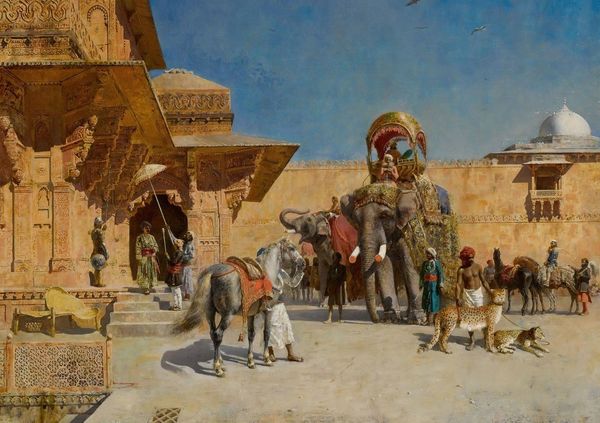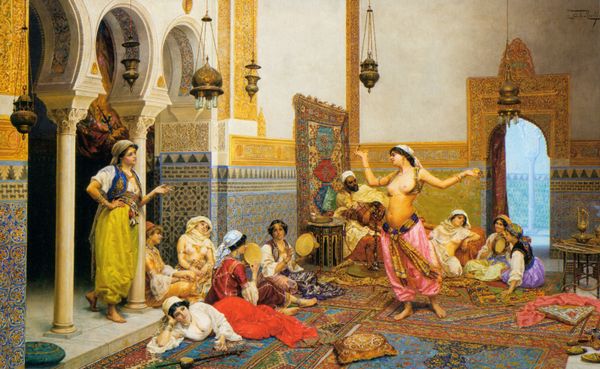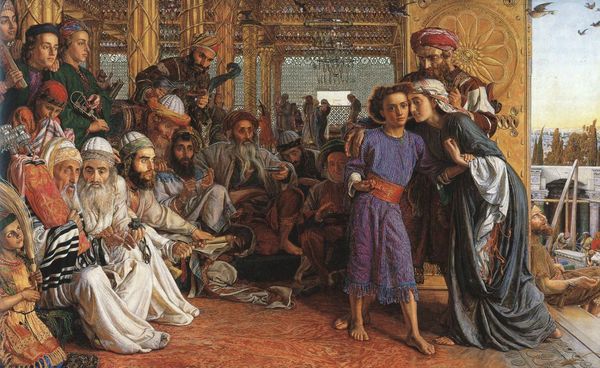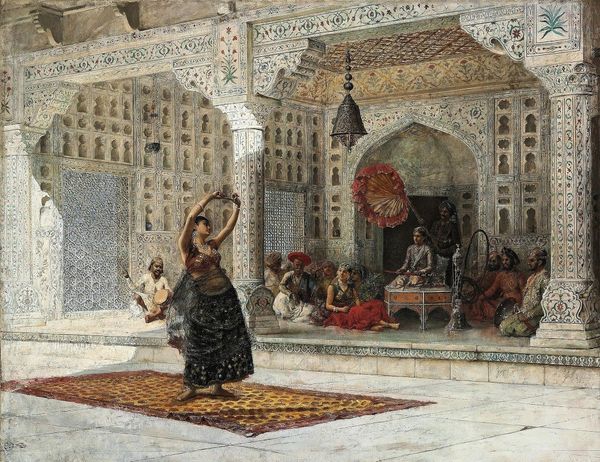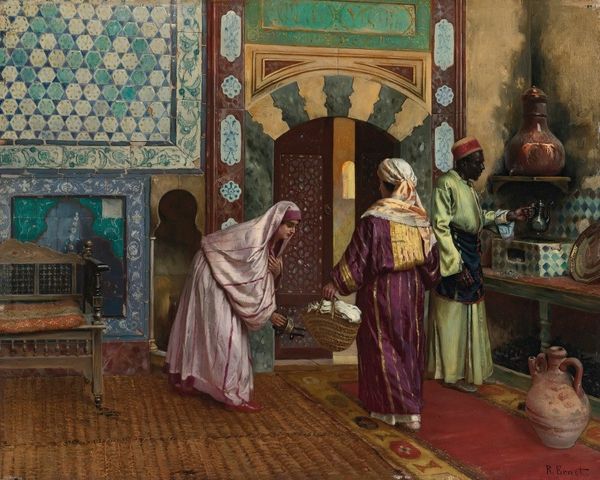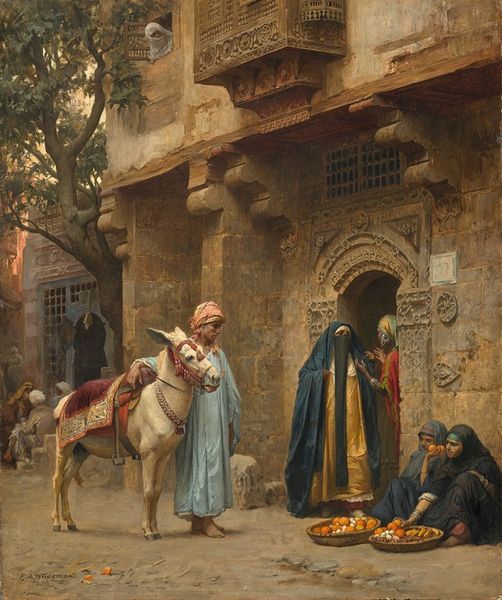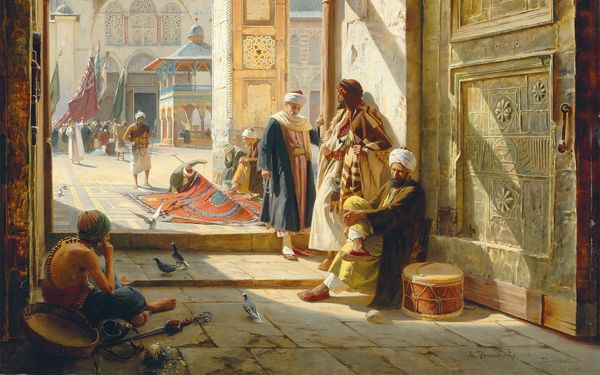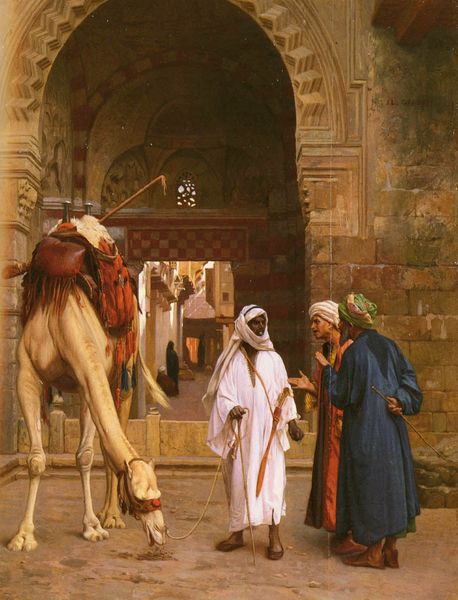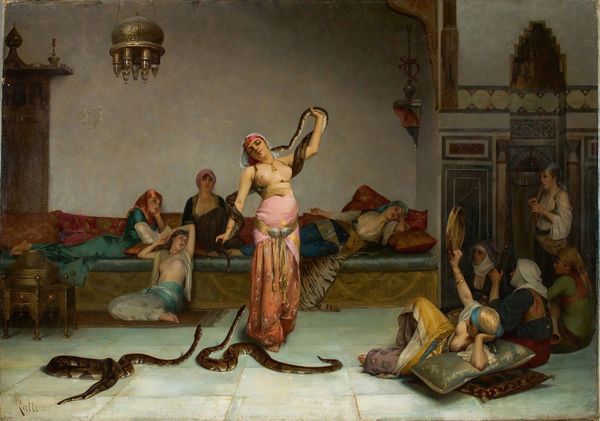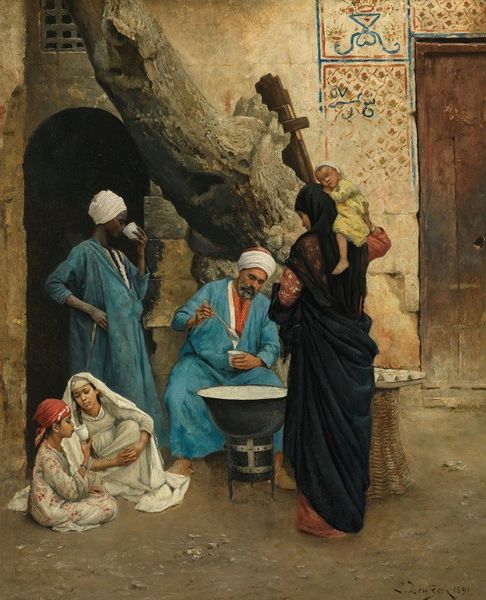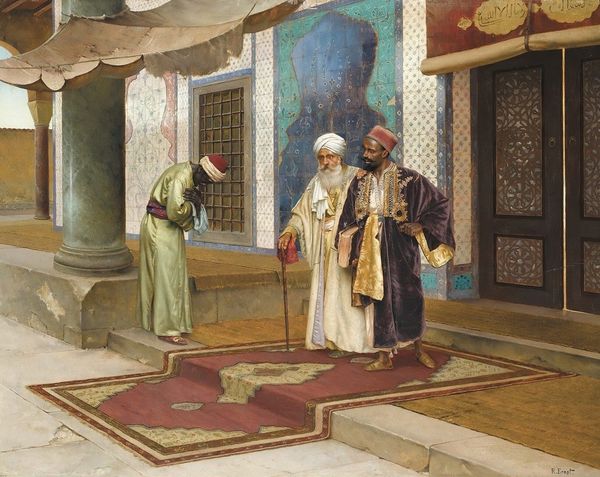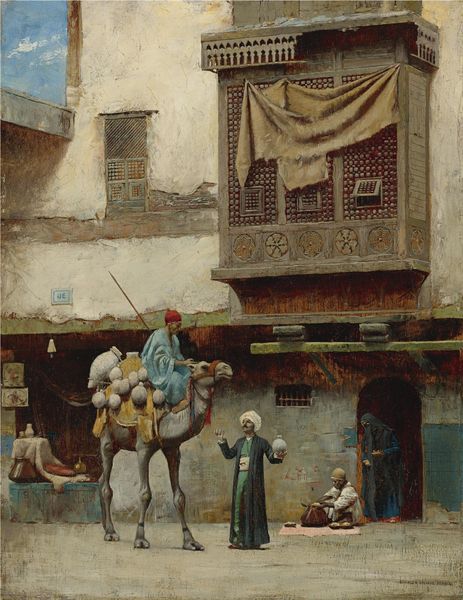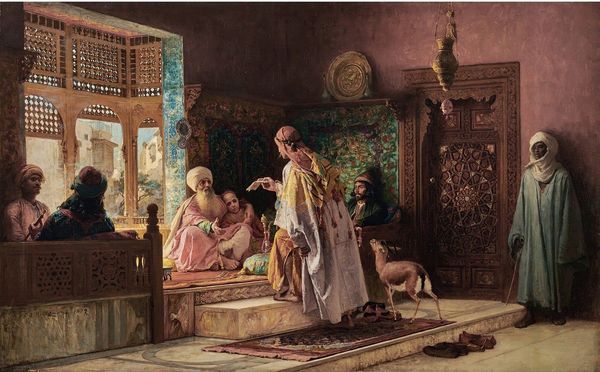
painting, oil-paint
#
figurative
#
painting
#
oil-paint
#
oil painting
#
orientalism
#
cityscape
#
genre-painting
#
watercolor
#
realism
Copyright: Public Domain: Artvee
Curator: Let's discuss Rudolf Ernst's "The Fountain Of Ahmed III, Istanbul," painted in 1892 using oil paint. It's a vibrant cityscape scene that encapsulates the spirit of Orientalism. What strikes you first about it? Editor: The bustling, sun-drenched atmosphere. All the figures in this scene going about their daily rituals carry a familiar humanness that overcomes the foreign architecture. There's a definite feeling of suspended time—it evokes an entire narrative world beyond the fountain. Curator: Yes, and let’s consider the interplay of color and form here. The cool blues and greens of the fountain contrast beautifully with the warm tones of the architecture behind and within the human figures in the foreground. The light suggests a specific time of day; everything is illuminated with this perfect and clear angle. Editor: The fountain itself acts as a meeting place, doesn't it? It brings together men, women, children, animals from diverse social standings in an array of activities, some commerce related and some just lingering near a vital life source. That fountain clearly serves as more than just architectural decoration or mere source of drinking water. Curator: Absolutely. The carefully rendered architectural ornamentation of the fountain and buildings are highly structured and complex. Observe the meticulous brushstrokes defining those geometric and floral designs that encircle it, and yet its all softened by light, color, atmosphere, bringing a cohesive formal structure that belies any sense of being overwrought or crowded. Editor: Speaking of structures, do you think it has something to tell us about cultural memory here? These daily rituals play out in public view, against the grand but soft presence of monuments. People are living their normal lives within these shadows cast by former empires—we see their continuity. It also points to how culture creates identity out of the landscape, how each part informs the other. Curator: An astute reading, especially noting that landscape isn't treated merely as background but an essential element defining these public interactions and therefore influencing how the viewer interprets what occurs within the scene. Editor: Precisely, which I think makes us re-examine the role of objects that carry meaning but fade with repeated views, blending memory and symbolism together with cultural weight across passing time. Curator: Agreed. It shows how much depth exists beyond first appearances, reminding us to observe relationships in the visible field. Editor: Yes, and it has opened my eyes toward thinking about public spaces and the echoes they possess from ages past.
Comments
No comments
Be the first to comment and join the conversation on the ultimate creative platform.
